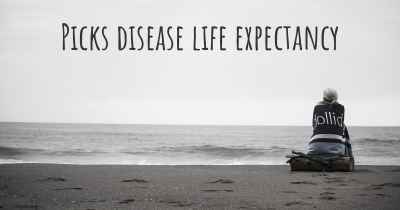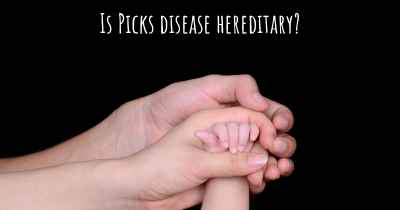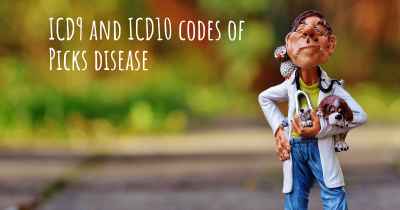What is the history of Picks disease?
When was Picks disease discovered? What is the story of this discovery? Was it coincidence or not?

Pick's disease, also known as frontotemporal dementia (FTD), is a rare neurodegenerative disorder that primarily affects the frontal and temporal lobes of the brain. It was first described by Arnold Pick, a Czech psychiatrist and neurologist, in the late 19th century. Pick's disease is characterized by progressive changes in behavior, personality, and language, leading to significant impairment in social functioning and daily activities.
The discovery of Pick's disease:
In 1892, Arnold Pick presented a case study of a 71-year-old woman who exhibited symptoms of progressive aphasia (language impairment) and behavioral changes. He observed distinct abnormalities in the brain tissue upon autopsy, including the presence of abnormal protein aggregates known as Pick bodies. These findings marked the first identification of what would later be recognized as Pick's disease.
Early research and understanding:
Following Pick's initial discovery, further research into the disease was limited due to the lack of advanced diagnostic techniques and the rarity of cases. It was not until the mid-20th century that advancements in neuropathology and neuroimaging allowed for a better understanding of Pick's disease.
Identification of Pick bodies:
In the 1960s, researchers identified the characteristic Pick bodies as abnormal accumulations of a protein called tau. Tau is normally involved in maintaining the structure and function of nerve cells, but in Pick's disease, it becomes abnormally modified and forms insoluble clumps within brain cells. These clumps disrupt cellular processes and lead to the degeneration of brain tissue.
Classification as frontotemporal dementia:
In the 1990s, the term "frontotemporal dementia" (FTD) was introduced to encompass a group of disorders that primarily affect the frontal and temporal lobes of the brain, including Pick's disease. This classification helped to emphasize the commonalities between different forms of dementia and facilitated further research into the underlying mechanisms and potential treatments.
Genetic factors and familial cases:
While most cases of Pick's disease are sporadic, meaning they occur without a known cause, a small percentage of cases have a genetic component. Mutations in certain genes, such as MAPT (microtubule-associated protein tau) and GRN (progranulin), have been identified as risk factors for familial forms of FTD, including Pick's disease. These genetic discoveries have provided valuable insights into the disease's pathogenesis.
Clinical features and diagnosis:
Pick's disease typically manifests between the ages of 40 and 65, although it can occur at any age. The early symptoms often involve changes in behavior, personality, and social conduct. Individuals may exhibit disinhibition, apathy, loss of empathy, and poor judgment. Language difficulties, such as word-finding problems and comprehension deficits, are also common.
Diagnosing Pick's disease can be challenging, as its symptoms overlap with other forms of dementia. A comprehensive evaluation, including medical history, neurological examination, neuropsychological testing, and brain imaging, is necessary to rule out other potential causes and arrive at an accurate diagnosis.
Current understanding and ongoing research:
Research into Pick's disease and frontotemporal dementia is ongoing, with a focus on understanding the underlying mechanisms, developing biomarkers for early detection, and exploring potential therapeutic interventions. Advances in genetics, neuroimaging, and molecular biology have provided valuable tools for unraveling the complexities of the disease.
Treatment and management:
Currently, there is no cure for Pick's disease, and treatment primarily focuses on managing symptoms and providing supportive care. Multidisciplinary approaches involving medications, behavioral interventions, and support from healthcare professionals, caregivers, and support groups can help improve the quality of life for individuals with Pick's disease and their families.
In conclusion, Pick's disease, first described by Arnold Pick in the late 19th century, is a rare neurodegenerative disorder characterized by progressive changes in behavior, personality, and language. The identification of Pick bodies and their association with abnormal tau protein accumulation has been crucial in understanding the disease. While research into Pick's disease and frontotemporal dementia is ongoing, current treatment options focus on symptom management and supportive care.








